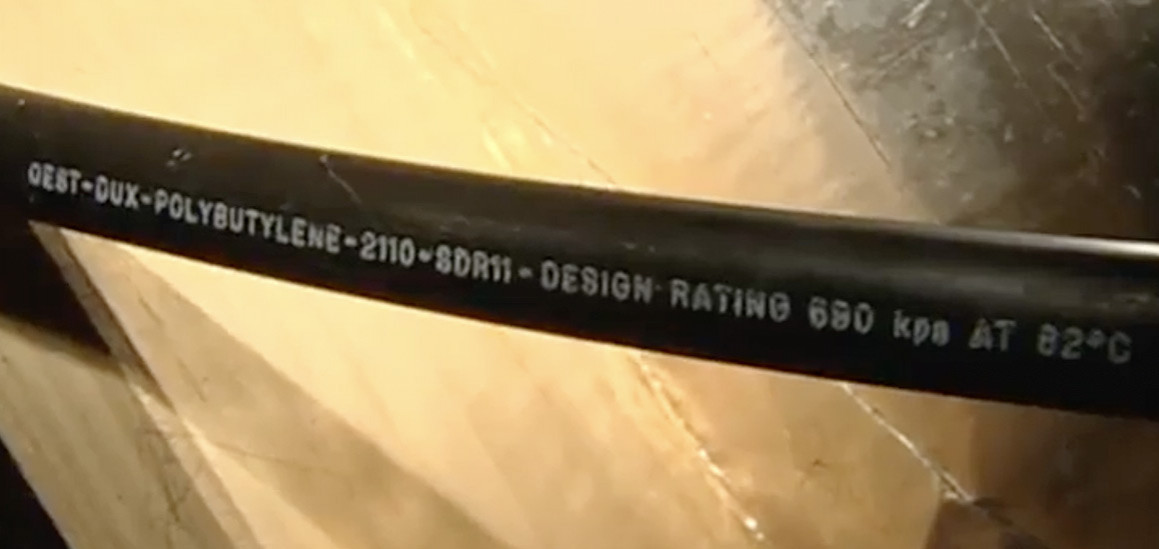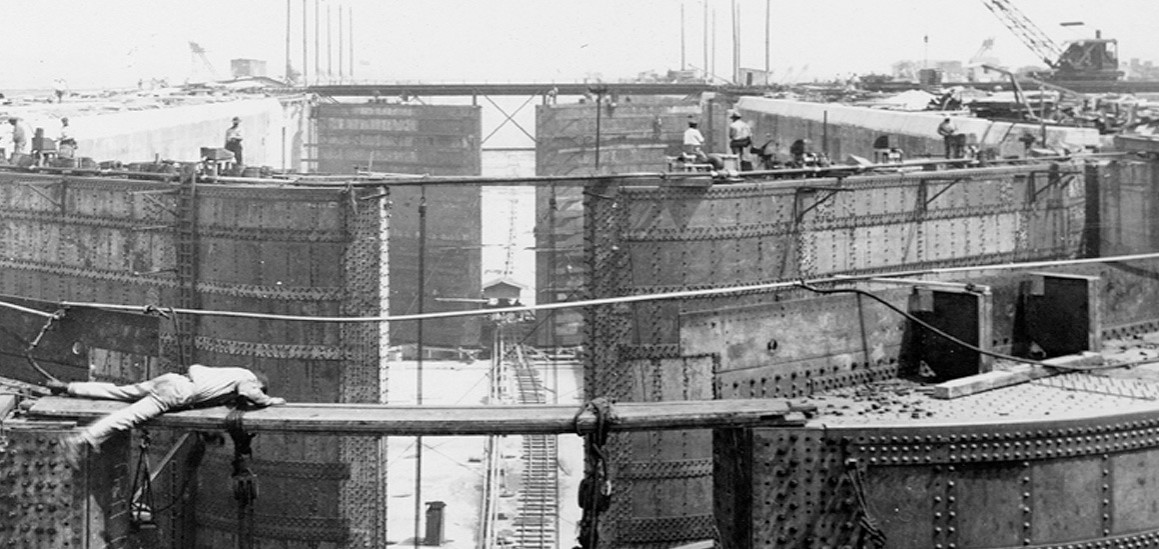Damn Interesting | Watersmith Plumbing and Gas
Just a collection of some damn interesting plumber things / page 2
Other interesting plumber things: « First ‹ Prev 1 [2] 3 4 5 Next › Last »

When should you get rid of Dux Quest in your home? “Yesterday” is the correct answer.
Behind many walls and under many floors is one of the biggest problems plaguing plumbing in New Zealand — black-coloured plastic pipes branded; Dux Quest.
Dux Quest pipe is unreliable and bedevilled by problems. It is notorious for splitting, along the pipes or at the plastic joins, causing leaks throughout your home. If the leak occurs behind the wall and begins to rot the weatherboards and jib, you may be looking at exorbitant replacement costs.
Dux Quest was introduced to New Zealand as one of the first plastic plumbing products to replace copper pipes in the mid to late 1970s. Commonly used throughout the ’70s and ‘80s it was installed in an estimated 20,000 — 40,000 homes. The product made news headlines in the late ‘80s as it began to fail in homes across the country, prompting the maker, Dux Industries, to withdraw the product from the market.
How do you know if you have Dux Quest?
The colour of Dux Quest is usually black and it looks like plastic similar to the piping that is used for a garden sprinkler system. There is often a Dux Quest or Quest brand inscribed in white along areas of the black piping. If your house was built between 1970 and 1989 and hasn’t been renovated, it’s likely to have Dux Quest plumbing.
So what’s the issue?
Insurers don’t like Dux Quest plumbing. There have been numerous claims of it breaking and causing significant water damage. In fact, the product has caused so many problems in New Zealand that many insurance providers put an exclusion on the policy for Dux Quest plumbing. In addition, when it comes to Dux Quest, most insurance providers will only cover the first leak, leaving you to foot the tab for any further problems.
Replacement is essential
At this point, we recommend that you replace all Dux Quest pipes with newer modern pipework to avoid major problems in the future. It may seem like a major job, but it’s better to have the warranty of new plumbing and your house insured again for future leaks.
Get in touch to discuss replacing existing pipes or inspecting your home for Dux Qest plumbing.

Poo Probe — the Science Underpinning the Detection of Covid-19 in Wastewater
Wastewater testing for Covid-19 began in April 2020, with the goal of providing an early warning of outbreaks and serving as an additional surveillance tool.
Since then, science has advanced and the number of sites has continuously increased. ESR now conducts regular wastewater testing from several locations in Auckland along with Christchurch, Rotorua, Hamilton, and Wellington.
Wastewater testing is not a new concept; ESR routinely analyses wastewater for viruses and illegal drugs.
There are two ways to take wastewater samples.
Automated Composite Sample is the preferable option. This is where a pump gathers a tiny volume of wastewater automatically every 15 minutes for 24 hours. Most wastewater treatment plants already have these in place, and the majority of samples are collected in this manner.
While many treatment plants have these samplers, some do not, and if scientists want to investigate a specific location, they must employ Grab Sampling, which involves obtaining a sample directly from the wastewater, usually via a manhole.
One litre samples are then dispatched to ESR’s laboratory in Wellington for analysis.
ESR uses up to half the sample (500ml is stored should later tests be required, or to confirm an unexpected result) and concentrates it down to roughly half a teaspoon, removing all the water while leaving the virus behind.
From there it’s the same process as regular testing for the virus of someone’s swab — they extract the viruses, turn the RNA into DNA and run it on a PCR to tell if the sample is positive or negative for the virus.
So, how effective is the surveillance? Very! There are many factors that affect detection, however, so far, the tests have proven sensitive enough to discover about 10 cases in an area of 100,000 people. A positive detection in the wastewater indicates that at least one person has been shedding Covid-19 into the wastewater in the 24 hours before each sample was collected.
Sewage testing, on a whole, is a great method of early disease detection and over time can offer trend data that can be used to supplement other surveillance data used to influence public health decisions.
More info:
ESR Wastewater (FAQs)
Tracking COVID-19 with wastewater
CDC Wastewater Surveillance

Plumbing = Lead
The word ‘plumbing’ is derived from the Latin word ‘plumbum’, meaning Lead. Hence the reason the symbol for lead on the periodic table is ‘Pb’. Lead was the material used for the ancient aqueduct systems of the Roman Empire.
It’s been years since lead was outlawed from being used in household products such as paint and later in plumbing materials. Despite this, lead is still a serious hidden risk to homes and families in New Zealand.
Lead poisoning is a concerning and under-recognised public health issue. Lead is one of 10 chemicals that the World Health Organization (WHO) considers to be of significant public health concern.
Lead absorption can harm the brain and nervous system development of young children (including the fetus) where the damage is thought to be irreversible. Lead exposure in adults can result in long-term consequences such as an increased risk of high blood pressure and kidney damage. Lead absorption in pregnant women can result in miscarriages, stillbirth, premature birth, and low birth weight.
The most common felons of lead exposure are paint chips, paint particles, and soil. However, one historically de-emphasised culprit is drinking water. Due to an aging infrastructure, traces of lead in our water supply is becoming a widespread problem. A problem escalated by another concerning issue in our industry — cheap, non-certified plumbing products in our homes.
Even though water is a known source of lead exposure, the facts are still clouded and there’s a number of myths out there. For instance, did you know that heating or boiling water will not remove lead and, instead, increases its level of concentration?
More info:
Common Myths about Lead in Drinking Water
10 Myths About Lead in Drinking Water
PLUMBING PRODUCTS – SHED THE LEAD
LEACHING OF METALS FROM HOUSEHOLD TAPS — NEW REPORT
URGENT ACTION NEEDED ON NEWLY RELEASED RECOMMENDATION TO REVIEW LEAD LEVELS IN PLUMBING PRODUCTS
Lead poisoning in children and in adults

One of the World’s Deadliest Infrastructure Projects
Although not technically a plumbing feat, the Panama Canal, with over 80km of artificial waterways, is still regarded as a crowning achievement of 20th-century — to compare a scale, if you live in Wellington that’s nearly four times the width of the Cook Strait!
It was one of the largest and most difficult infrastructure projects ever undertaken, unfortunately, it was also one of the deadliest. More than 75,000 workers laboured on the Panama Canal and about 30,000 of them died building it. Most were French and West Indian workers who died of yellow fever and malaria.
The Canal was completed in 1914, although the US is credited for the building the Panama Canal, it actually only just completed what the French first started in 1881.
The Canal cuts through Isthmus of Panama and is a channel for maritime vessels. The conduit is a shortcut that greatly reduces the time for ships to travel between the Atlantic and Pacific oceans and avoids the lengthy, hazardous Cape Horn route around the southernmost tip of South America.
The Canal uses an arrangement of locks that operate as water lifts, raising ships from sea level, at the Pacific or the Atlantic, to the level of Gatun Lake, an incredible 26 meters above sea level.
Mostly used by China and the US, traffic through the Panama Canal is a barometer of world trade. Last year (2019), the Canal registered a total of 13,785 transits, transporting 252 million long tons of goods, and generating tolls that totalled 2,592 million US dollars.
Here are some more interesting figures:
- 14,000 ships and 260 million tons of merchandise cross the Canal annually.
- 5% of world maritime traffic uses the Panama Canal.
- 82 kilometres — length of the Canal.
- 26 hours — time necessary to cross the Canal, including wait-times (8-10 hours without wait-time).
- 26 meters — the difference in altitude between the highest point of the Canal and sea level.
- 60 centimetres — space separating the hull of a Panamax vessel (the largest the Canal can currently accommodate) from the bank during passage through its narrowest locks.
- US$375,600 — the most expensive regular toll for Canal passage to date, paid by the cruise ship Norwegian Pearl in 2010.
- US$54,000 — the average toll.
- 36 cents — the lowest toll ever paid by American Richard Halliburton who swam the Panama Canal in 1928.
More info:
The Panama Canal’s forgotten casualties
How Does the Panama Canal Work?
Live Marine Traffic, Density Map and Current Position of ships in PANAMA CANAL

How Hot Water Cylinders Work
Most of us don’t think much about how our water is heated as long as it’s hot when we turn on the tap or get into the shower.
Depending on the time of the year the water, coming into your house through a succession of pipes, is usually cold or cool. To have a hot shower or a bath, the water needs to be heated — that’s where the hot water cylinder comes into play.
Hot water cylinders are familiar fixtures in most Wellington and Lower Hutt homes. Typically they’re a large metal cylinder located in a cupboard, laundry or basement.
The purpose of a hot water cylinder is to store hot water required for household use. It’s basically a water-filled drum, equipped with a heating apparatus on the bottom or inside.
For something so ordinary-looking on the outside, hot water cylinders have a clever design on the inside.
A dip tube feeds cold water, from your home’s water pipes to the bottom of the tank’s interior where the water starts to warm up. The heating mechanism, whether a burner or an electrical element, is controlled by a thermostat and remains on until the water reaches the set temperature.
As the water inside heats, it rises where it can be drawn out through a hot water outlet pipe at the top of the cylinder. The key to a water cylinder’s design for separating cold, incoming water from hot, outgoing water is that it takes advantage of the principle that heat rises. The water sitting at the top of the cylinder and flowing out to the faucet is always the hottest because it’s the nature of hot water to rise above the denser, colder water at the bottom.
The recommended hot water temperature setting should be 60 degrees Celsius at the cylinder (to prevent the growth of legionella bacteria) and no more than 55 degrees Celsius at the tap so you don’t get burnt (kids).
Interesting Facts
New Zealander Lloyd Mandeno developed one of the world’s first electric storage hot water cylinders for use in the world’s first electric storage house. The original hot water cylinder was built of corrugated iron with pumice insulation. The corrugated copper cylinder still forms the basis for the modern low-pressure electric cylinder and is found in nearly two-thirds of all NZ homes, the highest market penetration in the world. Today, hot water cylinders consume one-twelfth of all NZ’s electricity, and about a third of all household electricity.
More info:
The search for the oldest hot water cylinder
Types of water heating systems
Need your hot water cylinder repaired, upgraded, replaced or relocated?